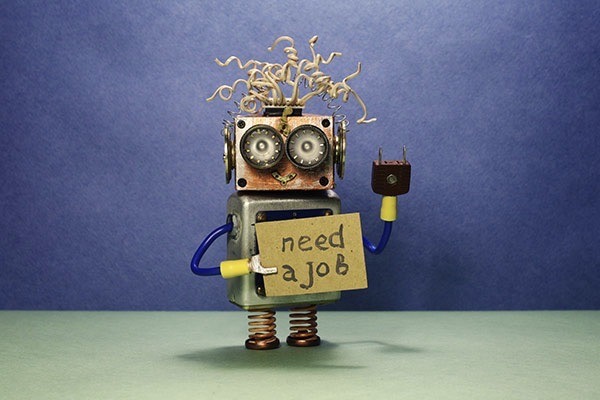Published on the 22/02/2024 | Written by Heather Wright

ERP ‘Goldilocks’ talks innovation and what customers really, really want …
Charlie Wood is open about the excessive AI hype and how it’s being viewed by local businesses.
“We’ve all been playing with ChatGPT for a year now, but have we actually done anything serious with it? It’s our job [as a vendor] to figure out how to make it useful,” Wood, chief executive of SMB cloud ERP platform Wiise, says.
And making AI useful is something Wood believes Wiise is well on the path to achieving.
“It’s our job to actually make that hype into something useful.”
The Australian company recently announced Endeavour and Thyme Technology as its first two delivery partners in New Zealand, after setting up business in the Kiwi market last year. Its been working on the Kiwi version of its ‘hyper localised’ version of Microsoft Business Central ERP since then.
Wood says the company is accelerating its pace of innovation after several years spent doing the ‘heavy lifting’ that sits behind the scenes.
There’s plenty of AI behind that innovation, which is hardly surprising given Wiise is built on Microsoft – a big investor in OpenAI – and Microsoft, alongside KPMG Australia and Commonwealth Bank of Australia, was a foundation partner in the business when it was established in 2017.
Speaking with iStart this week, Wood had plenty of AI innovation to discuss, including a series of AI-powered Copilots to provide advisory around tax payroll and awards in both Australia and New Zealand, and an offering which takes complex reports such as accounts payable and accounts receivable and summarises them into ‘humanly readable emails’ which can be sent to the leadership team.
“The businesses we work with are interested in AI but they’re not technologists so they’re not wallowing in the hype as much as some of the enterprise folks would be,” Wood says.
“It’s our job to actually make that hype into something useful. If we can simplify, abstract the complexity and actually deliver tools to them that are useful without getting lost in the hype and the technology, that’s interesting.”
Customers, he says are certainly interested in the tools.
“They can see the opportunity, they just don’t want to be involved in the hype and the noise. They just want to see it put into their hands in a way that is useful. That’s our role in this.”
The Australian company is 100 percent owned by KPMG, operating as a standalone business, not a subsidiary.
Like the Microsoft links, the KPMG links are invaluable. KPMG New Zealand provides services like advisory accountancy and tax services to around 7,000 customers in Wiise’s target segment.
“It is a wonderful relationship we have that enabled us to tailor our product with localisations like taxation laws, payroll, local charts of accounts…” Wood says.
It also plays into AI ambitions.
“The AI tools race goes so quick it almost becomes a level playing field and the differentiator becomes the data you can feed them as well as the innovation ideas.
“This is where the opportunity comes from. If you are someone like a KPMG and you’re sitting on a lot of proprietary data, these Rags – retrieval augmented generators – enable you to use the semantic engine of the LLM and only respond using this data.
“We’re working on a number of things and have sprints on a bunch of products there.”
The company is also gearing up to launch Warehouse on Time, an extension of Wiise and Business Central that provides warehouse mobility. The mobile app will extend Wiise’s current inventory and order management and fulfilment to the warehouse floor for pick/pack, put away, send, ship, returns and adjustments.
Wiise has around 350 customers in Australia and has already signed ‘a couple’ in New Zealand, which are currently in deployment. It’s the largest piece of Microsoft Business Central business in the region ‘by a long way’, Wood says.
He dubs the Wiise offering a ‘Goldilock’s’ ERP, sitting between the Xeros and MYOBs and the larger Netsuites.
“We tend to do a lot of work with anything that is wholesale manufacturing, distribution, anything complex and inventory based.”
Australia and New Zealand’s discrete manufacturers are a key – and Wood says surprisingly abundant – customer base, with anything from fire extinguisher manufacturers to those dealing with supplements, cosmetics or marine technology, making the cut. Typical revenue? Up to $200 million.
“That’s not a limitation, it’s just where our sweet spot is,” Wood quickly adds.
“You sort of outgrow Xero and the same thing with a lot of MYOB products and the next step might be to Wiise and Business Central.”
It’s not just companies outgrowing other systems that Wiise and its local partners are eyeing up, however. Wood notes that many companies are still running on very old legacy offerings – that box under a desk – another key market for the company.
He doesn’t rule out competing with Netsuite either, saying Wiise can also go ‘really really big’, but can compete on price for software and delivery.
Companies that acquired other companies – and all the technology they themselves used – are another prime candidate, with Wood saying Wiise does a lot of work in the area of complex company consolidation.
“That’s something that is just very good in the underlying platform and then we have some extra reporting layers on top.”
While KPMG is the top of funnel awareness and pipeline generator for Wiise, it’s the local providers – in New Zealand’s case Thyme Technologies and Endeavour, with around a dozen partners in Australia – who provide the delivery.
“ERP is a pretty tricky thing to implement. You can’t just come out of a generic IT background and suddenly go ‘I’ll do ERP implementations.’ You have to be a functional consultant and understand what you are doing.
It’s all about getting the implementation right. If the implementation goes right in the first place for the customer, they have a good time. And that’s the key thing. Because with ERP it’s five to seven years, people don’t move very often so it’s important to get it right in the first place.”
Wiise, which has its own team of functional consultants and technical staff, works with customers on discovery, understanding their needs and matching them with a partner. The Wiise team then sits alongside the partner to make sure the implementation and scope of delivery is correct.
“We are a SaaS business, so we measure everything and our net dollar retention is about 120 percent, which means we’re not churning or losing customers, they grow over time, which means they’re having a good time.
“That’s our single best quality metric that we are doing the right thing by customers.”



























